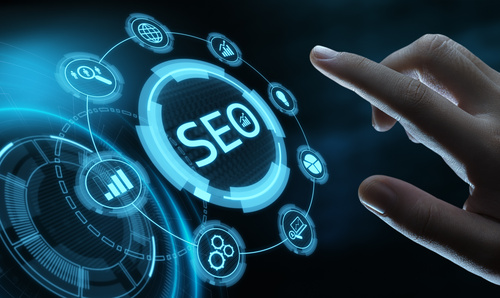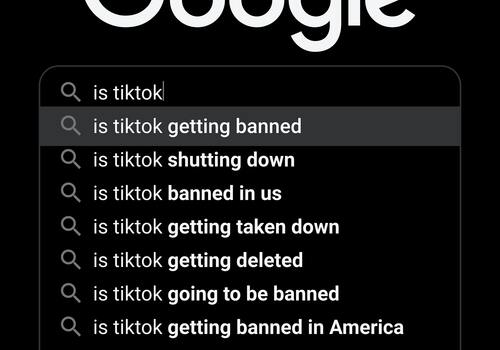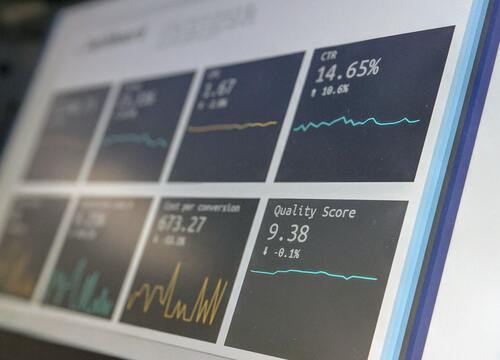To see and be seen: Search Engine Optimization / SEO
The most beautiful Internet presence is of no use if the site is not found. We know which course has to be set in search engine optimization to get visibility and reach.

-
-
Top Priority to SEO
Search engine results
An old SEO joke goes: What's the best place to hide a body? Answer: Page two in Google search results. In fact, at most the first ten organic search results are clicked. More are not displayed on page one of the search results called SERPs (Search Engine Results) anyway.
Organic search results
You can't buy organic search results. That's what search engine optimization is for.
It is also not about saving money. Paid advertising is often cheaper than results achieved by optimization. However, organic search results are valued more highly by users than advertising. And rightly so.
When no SEO is practised
A worst-case scenario: A company website has been online for a year, but nothing happens. The site has far too few visitors and sales in the online store are sluggish. Yet the site has a great design and the products are adequately presented. Unfortunately, many well-designed websites remain undiscovered because no search engine optimization.
A question of competence
The reason for this is almost always that many advertising agencies do a good job graphically, but lack the necessary competence when it comes to search engine optimization.
SEO is for professionals
At the latest here comes an SEO expert into play, who provides both visibility, reach and of course a good ranking in the search results on Google .
Our SEO expertise
repalogic has decades of experience as an SEO agency and knows which adjustments need to be made to put a website on the road to success.

Find out more about our services and make an appointment for a free consultation on +49 (0)7575 7180 951
Search engine optimization step by step
First SEO measures
Analysis of current SEO measures (if any). What works, what does not?
SEO Strategy
Clarify priorities, set short/medium/long-term goals.
Keyword research and user intention
The foundation of search engine optimization
Content optimization
Existing content is evaluated, future content strategy planning
Link building
Building trust in own brand / achieving expert status
Monitoring, KPI and reporting
Review and measurement of SEO measures
First SEO measures
First of all, an analysis of the SEO status quo is useful. Where is the page, does it appear on Google, how do my keywoumeaOrds rank and what are they? Is the content good and is being read? Has the topic of responsive design already been taken into account? The better the results of the analysis, the less costly the measures to be taken will be. Unfortunately, this analysis often yields frightening findings.Ergo, it is necessary to work through an extensive catalog of tasks:
- Constant accessibility of a website must be ensured
- Optimization of snippets, i.e. page title and page description
- Ensure fast page loading time
- Optimize content quality Keyword research and analysis
- Optimize responsive design Link building Repair broken links
- Optimize information architecture (internal links)
- Remove content that disturbs visibility Eliminate any duplicate content
These are all things that must work before a real SEO strategy can be defined. However, it should also be said that these measures, if you check them regularly, are already enough to significantly improve the performance of a website. This is especially true for smaller companies and online stores. However, if one has a medium-sized company with corresponding sales and there are competitors on the market, a more extensive SEO strategy makes sense.

SEO-Strategy
An ambitious SEO strategy is a complex construct whose measures must be defined in terms of time: short-term goals, medium-term goals and long-term goals. In the short term and partly in the medium term, the aim is to achieve what is described in the previous section. Medium- and long-term measures should lead to a website being the digital image of a brand and to it becoming an authority in the respective business field or subject area.A plausible example is Tesla: here, the focus is on technically advanced cars in the luxury class, which is reflected in the brand's image, the design language of the models and the company's communication. Tesla has managed to leave all its competitors behind in just a few years: a clever model policy, cutting-edge technology, vehicles whose operation is strongly reminiscent of a smartphone.
This fits perfectly with the brand's online presence and a homogeneous image is created. If you want to achieve expert status in the market on Google & Co., you should consistently work on achieving success in the field of domain optimization. This is related to artificial intelligence, which has already come a long way at Google.
For example, Google recognizes:
- Does a brand successfully present itself as an entity and is its
website a reflection of that entity?
- Does the brand succeed in contextualizing itself in certain subject
areas?
- Do semantic topic worlds exist?
- Can the content of a page be clearly assigned to a specific topic?
To achieve this, the following measures are necessary:
- Keywords and topics for the content must be chosen carefully
The search intention for the respective search terms must fit into
the semantic environment
- Terms and topics must be carefully researched and semantically
analyzed (mappings)
- Offline marketing must fit the semantics; ideally, a brand is already
an authority on a certain topic offline
If Google receives all these signals, this brand will also be ranked accordingly in the long term and will also achieve the corresponding visibility in a specific topic field.

Keyword research and user intention
Keyword is probably the most frequently mentioned term in the SEO environment and not without reason. Because keyword stands for search term. Keywords are divided into short-tail and long-tail, whereby it is not necessarily the length of the keyword that matters, but rather how specific the search query is. Long-tail keywords are more specific and usually contain a verb such as "download" or "to make yourself". The list of results here is shorter, and the likelihood of a conversion is higher.Keyword research is nothing more than compiling a list of words that the user uses to search for a product, service, information or a specific location. For keyword research there are some very useful tools that help to find possible terms. A competitor analysis is also useful: a successful e-commerce company often owes its success to a well-chosen set of keywords.
More and more important in the field of keywords is the user's search intention. Thanks to artificial intelligence, Google is increasingly able to deliver results that pretty much reflect what the user is specifically looking for.
Thus, there are the following categories on the topic of search intention:
- informational search intention: the user is looking for information
on a specific topic.
- transactional search intention: the user has action intentions, often
he is looking for a specific product that he wants to purchase.
- navigational search intention: the user is looking for a website he
knows or the website of a brand he knows.
- local search intention: offers from the local area are searched for,
such as restaurants.
- News search intention: the user is looking for news about a topic or
news.
A good keyword research requires creativity and experience. Professional tools and the creation of a buyer profile (buyer persona) and ergo the definition of the target group also facilitate an important role.

Content opimization
The central topic in the area of search engine optimization is undoubtedly the content area. Because this is where everything ultimately comes together: Keyword research is used to find terms according to which a website will be optimized. As soon as a keyword set is available that increases the visibility and ranking of a website, this keyword set is used to create content.This is where the customer journey comes into play, i.e. the customer journey or the user's purchase decision process. For each of the individual touchpoints during the customer journey, the appropriate content must be provided and the user must be picked up. The potential customer should thus gain trust and make the transaction on the page that best accompanies them during their and trust during the decision-making process.
The task is to produce content in different formats while using the keywords.
Content formats include
- Transactional content: the user should be encouraged to make a
purchase, book a trip or take out a subscription, for example. Using
the right keywords is most important here - but this is also where
the biggest competition lurks.
- Informational content: Information or guides are provided here.
- Evergreen content is particularly efficient here. With evergreen
content, topics are prepared in such a way that they remain
relevant over a long period of time. Thus, good evergreen content
ranks higher than time-related content, which wants to be revised
again and again. However, content with high content freshness is
also important.
- Branding Content: This is enormously important for branding and
plays a significant role in the SEO strategy.
- Social Content: This refers to content on social media and not only
Facebook and Instagram, but also forums and sites like Linkedin. This is how backlinks can be gained, for example.
- User-generated content: This is very useful content in the form of
reviews or testimonials - as long as they are positive!

Link building
Link building refers to links that are created when external websites link to one's own site. This is a very old ranking factor, the relevance of which is discussed again and again. However, it is certain that links from high-quality websites that fit the topic have a positive effect on visibility and ranking. Very positively, in fact. For example, it is desirable for the manufacturer or seller of coffee machines if one of his models is chosen as the test winner in a comparison and many online media report on this (Amazon is very successful with this model). A direct link in the form of a URL is also of positive benefit. It is important that the linking website is an authority in its subject area and has an excellent ranking itself. Of course, the topic should also fit. However, if you buy backlinks or link from anonymous web catalogs, you even risk being penalized by Google.To get good backlinks is a big challenge for every website owner and requires a lot of effort and patience. So it makes sense to follow a strategy here as well.
The evaluation of backlinks takes place under the following criteria:
- Domain Pop / Domain Rate: stands for Domain Popularity, meaning
that many links should come from as many URLs as possible and
not many links from only one URL.
- Age of the domain: the longer a linking source is, the better the link
is rated.
- Trust: as already described, topic-related relatedness and authority
of a page represent an important criterion.
- Backlink rating by tool providers: this is like a reflection of a
backlink rating by link quality rating by link rating tools.
- Traffic: the more visitors come to a page through the backlinks, the
more positive the rating by Google.
- Dofollow and nofollow: if a link is afflicted with a nofollow mark, the
value of the link is zero; conversely, dofollow links are to be rated
positively, provided that the preceding criteria are correct.
Link building is the most important part of offpage optimization. Offpage because the positive impulses come from an external, not the own website.

Monitoring, KPI and reporting
KPI stands for Key Performance Indicators, i.e. key figures for measuring and analyzing the measures taken. Monitoring is the regular monitoring and evaluation of the SEO measures taken, in reporting the results are summarized.The most important KPIs are:
- Visibility of the selected keywords: the performance of the keyword
set defined to increase the visibility of the website is measured.
Since it is possible to get visibility in addition to other keywords, it
should be analyzed whether this has a positive or negative effect on
visibility.
- Pagespeed: it is easy to measure the loading time, there are many
tools that you can use for free.
- Ranking of specific keywords: each keyword is assigned a specific
ranking. This has consequences for the measures taken or to be
taken.
- Organic traffic: these are the visitors who land on a website due to
the organic search results.
- Dwell time and bounce rate: this is an important KPI for the quality of content. The longer a user stays on a page (preferably also on
different subpages), the more favorably it affects the ranking. A
search engine correctly interprets this as meaning that the content
is interesting for the user, and this is rewarded. The bounce rate, on
the other hand, is a value that has a negative impact on the ranking.
- Snippet click-through rates and CTR: An attractive page title and
description as well as a high click-through rate, i.e. the user clicks
through as much content as possible.
Monitoring and reporting are among the most important tasks in search engine optimization and must be checked regularly.



